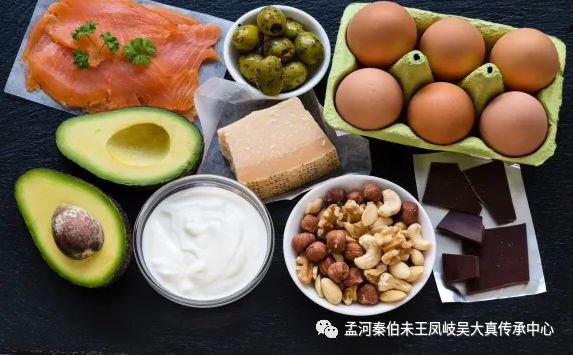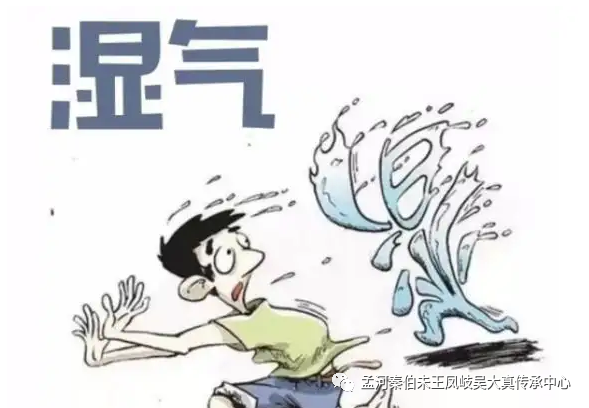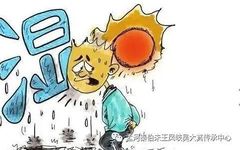From the perspective of Traditional Chinese Medicine (TCM), when dampness invades the upper jiao (upper burner), symptoms such as difficulty in coughing up phlegm or excessive phlegm upon waking can occur. Dampness is associated with yin, while heat is associated with yang; the interplay of yin and yang creates a contradiction. The coexistence of dampness and heat leads to a damp-heat constitution. In damp-heat weather, individuals with this constitution may feel sticky all over. Prolonged exposure to damp-heat can result in symptoms such as fatigue, lack of motivation, excessive facial oiliness, easily dirty hair, and a greasy tongue coating. Many people also experience bad breath upon waking, a lack of appetite, or a feeling of fullness in the stomach after eating, along with loose, sticky stools that are difficult to pass. Additionally, women may notice acne on their faces or an increase in yellow vaginal discharge, which may also indicate damp-heat invasion.
 1 Summer is the Peak Season for Damp-Heat tingjing
1 Summer is the Peak Season for Damp-Heat tingjing

During the hot and humid summer months, the air is filled with moisture, making it easy for the body to be invaded by dampness and heat. The internal environment can feel like a sauna, and over time, this can evolve into a damp-heat constitution. In TCM, a healthy person who exhibits symptoms such as a sallow complexion and a yellow, greasy tongue coating is likely suffering from a damp-heat constitution! For individuals with this constitution, neglecting health and regulation can lead to the accumulation of damp-heat, resulting in various diseases, such as liver and gallbladder disorders and gastrointestinal issues.
 2 Specific Manifestations of Damp-Heat Obesity Type
2 Specific Manifestations of Damp-Heat Obesity Type

In TCM, dampness is considered a yin pathogen, while heat is a yang pathogen. A damp-heat constitution results from the difficult resolution of both dampness and heat, leading to a polluted internal environment, often manifesting as internal steaming and external eruptions. Generally, individuals with significant damp-heat exhibit the “three yellows”: first, a sallow complexion; second, a yellow, greasy tongue coating; and third, yellowish urine. In severe cases, some individuals may even have yellow sweat. Common manifestations include an oily complexion, prone to acne and pimples, a red tongue with a yellow, greasy coating, a bitter and dry mouth, and a heavy, lethargic body. When damp-heat rises, it can lead to facial oiliness and acne, and may also scorch the blood vessels, causing oral issues such as bad breath and gum bleeding. When damp-heat descends, it can affect the bladder’s qi transformation function, leading to symptoms of unsatisfactory urination, such as frequent urination, urgency, painful urination, and incomplete urination in young men, often due to a damp-heat constitution. When troubled by damp-heat, individuals may also experience irritability, anger, restlessness, and red eyes.
People of all ages can be affected by damp-heat, especially those aged 30 to 45, which is considered the “earth” phase of life, where the body tends to accumulate more dampness. The transition from summer to autumn corresponds to the “long summer” season in TCM, which is associated with the earth element, leading to increased dampness. If damp-heat invades children, the most common symptoms are diarrhea and difficulty with bowel movements. In the elderly, symptoms may include soreness and heaviness in the lower limbs and back pain. Additionally, constipation or sticky stools, as well as dampness in the scrotum for men and increased vaginal discharge for women, are often related to this condition.
 3 Dietary Regulation for Damp-Heat
3 Dietary Regulation for Damp-Heat

In damp-heat weather, what dietary considerations should individuals with a damp-heat constitution keep in mind? Here are some practical tips to try.Those with a damp-heat constitution should avoid overeating, excessive alcohol consumption, and fatty foods, to maintain good digestive function.Drink water in moderation to avoid internal dampness or external dampness entering the body.Maintain a regular sleep schedule, ventilate living spaces frequently, and avoid using air conditioning when possible. Develop a habit of regular bowel movements.Engage in morning activities until sweating occurs, as sweating can help expel dampness, but avoid excessive sweating to prevent qi depletion.Incorporate aromatic vegetables such as cilantro (xiangcai), schizonepeta (jingjie), and patchouli (huoxiang), but these should be consumed in moderation as they can also be damp. Use them as side dishes to help eliminate dampness. Foods like mung bean sprouts (lüdouya), winter melon (donggua), papaya (mupao), and yam (shanyao) can be consumed as main dishes to help dispel dampness.Warm herbs like mugwort (aiye) and peppermint (peilan) can help eliminate dampness, while cool herbs like bamboo leaves (zhuyè) and lotus leaves (heliye) can clear heat. Drinking these as tea daily can assist in clearing internal damp-heat.Spices such as ginger (shengjiang), star anise (dàhuǐxiāng), and cinnamon (guìpí) have warming, damp-expelling, and sweating-inducing properties; adding a little to daily cooking can help warm the middle and dispel dampness.Ingredients like poria (fuling), white atractylodes (baizhu), millet (xiaomǐ), and rice (dàmǐ) can be cooked into porridge daily to strengthen the spleen, dispel dampness, and nourish the stomach, which is also a good choice.Cooking a soup with winter melon, adzuki beans (chìxiǎodòu), and pork ribs can help clear heat and dispel dampness.For children or those with chronic spleen and stomach deficiency who experience a lack of appetite, fatigue, or a feeling of fullness after meals, a mixture of stir-fried yam and stir-fried chicken gizzards in a 1:1 ratio, ground into powder and taken daily, can alleviate symptoms.If internal damp-heat is only mildly symptomatic, the above adjustments may lead to improvement. However, if symptoms are severe and adjustments are ineffective, it is best to consult a TCM practitioner for diagnosis and treatment before making further adjustments. 4 Tips for Expelling Dampness in Daily Life
4 Tips for Expelling Dampness in Daily Life

01 Eat Some “Cooling” Foods
Individuals with a damp-heat constitution should focus on a light diet, incorporating foods like adzuki beans (chìxiǎodòu), mung beans (lǜdòu), celery (qíncài), cucumbers (huángguā), and lotus root (liánwǔ), which are sweet and cold or sweet and neutral. They should also consume foods that clear dampness, such as coix seed (yìrén), lotus seeds (liánzǐ), poria (fuling), fava beans (cǎndòu), carp (lǐyú), winter melon, loofah (sīguā), gourd (húlu), bitter melon (kǔguā), purslane (mǎchìxiàn), cabbage (báicài), and water spinach (kōngxīncài).
02 Avoid “Heating” Foods
Try to avoid spicy, hot, and warming foods such as chili peppers, ginger, scallions, and garlic. Limit the intake of warming foods and drinks like beef, lamb, and alcohol, as well as hot pot, fried, and barbecued foods, as they can exacerbate damp-heat. Additionally, salt intake should be restricted to prevent worsening damp-heat.
03 Shift Emotions
When feeling troubled or distressed, it is important to quickly shift focus to other aspects. This can help individuals with a damp-heat constitution alleviate irritability and promote a peaceful state of mind, which aids in regulating the damp-heat condition.
04 Stay Dry
In daily life, avoid living in low-lying, damp areas; instead, choose dry and well-ventilated environments. Ensure adequate and regular sleep, avoid staying up late, and refrain from overexertion. After sweating, change clothes frequently and avoid wearing synthetic underwear and tight jeans.
05 Drink Herbal Tea
Artemisia Tea: 30 grams of artemisia, 6 grams of rhubarb, and 10 grams of green tea, steeped in water and consumed as tea daily, is particularly suitable for those with damp-heat constitution manifesting as cholecystitis, as it can clear heat, dispel dampness, and promote bowel movement. (This formula should be used under the guidance of a physician).
06 Avoid Excessive Sweating
There is an old saying in China, “Sweat that does not show dampness is fine; if sweat shows dampness, it leads to acne.” Sweating can help expel dampness, but excessive sweating should be avoided to prevent qi depletion. Suitable exercises for individuals with a damp-heat constitution include strength training, middle-distance running, swimming, hiking, various ball sports, and martial arts, which can help consume excess heat and expel excess moisture, achieving the goal of clearing heat and dispelling dampness.

